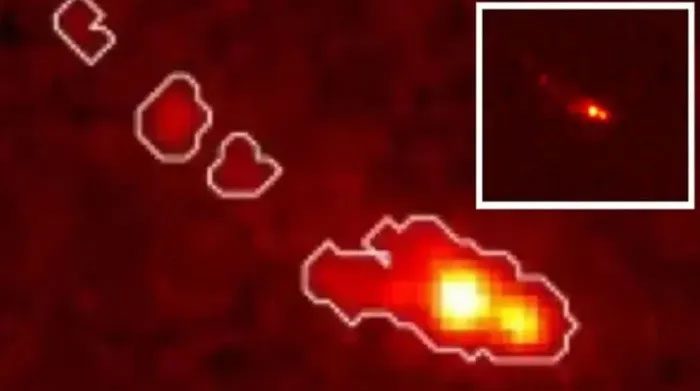Observations from the James Webb Space Telescope reveal that the object Gz9p3 is actually one of the oldest massive galaxies in the early universe.
Previously, the Hubble Space Telescope had observed Gz9p3 but only detected it as two bright spots rather than recognizing it as one of the oldest galaxies ever discovered, according to LiveScience on March 19.

The complex structure of the galaxy Gz9p3. (Image: NASA).
The international collaboration group Glass Collaboration has conducted detailed observations of galaxy Gz9p3 using the James Webb Telescope. The team discovered that Gz9p3 existed just 510 million years after the Big Bang – a period in the early universe that is now 13.8 billion years old.
Similar to other early galaxies observed by the James Webb Telescope, Gz9p3 has a significantly larger mass and is more mature than expected for galaxies in the early universe. At the time Gz9p3 was discovered, it appeared to contain billions of stars.
Moreover, Gz9p3 is not only heavier than anticipated but is approximately 10 times more massive than other galaxies observed by the James Webb during a similar period in cosmic history, according to a study published in the journal Nature Astronomy.
Using the James Webb Telescope and direct imaging, the team also determined that Gz9p3 has a complex shape with two bright spots revealing two nuclei. This suggests that Gz9p3 may have formed from the collision of two early galaxies in the early universe. The collision is likely still ongoing while astronomers are observing Gz9p3 with the James Webb Telescope.
Most galaxies in the universe evolve in this manner: by assimilating smaller satellite galaxies orbiting around them and forming stars. Thanks to the observation of Gz9p3, astronomers are realizing that galaxies can rapidly accumulate mass in the early universe through mergers and star formation, a factor that is more significant than previously thought.
Observing Gz9p3 and other observations made by the James Webb Telescope is helping astrophysicists refine their models of the universe’s early years.


















































